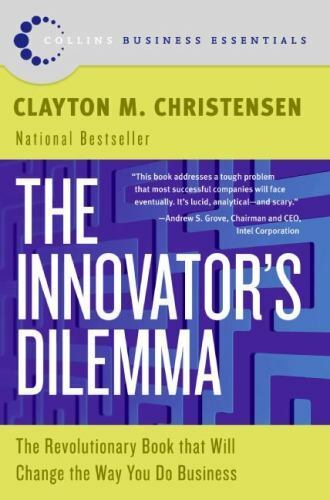“The Innovator’s Dilemma” by Clayton Christensen is a groundbreaking book that explores why established companies often struggle to innovate and adapt to changing market conditions. Christensen, a Harvard Business School professor, argues that successful companies can actually become victims of their own success.
According to Christensen, companies often focus on improving existing products and services, rather than investing in new and disruptive technologies. This strategy works well in the short-term, but it can make it difficult for companies to compete in the long-term.
Christensen uses the example of the disk drive industry to illustrate his point. In the 1980s, the industry was dominated by large, established companies like IBM and Seagate. These companies focused on improving existing technologies and creating higher-capacity drives. However, they failed to anticipate the emergence of smaller, cheaper drives that were used in portable computers and other devices.
Christensen argues that established companies often struggle to embrace disruptive technologies because they are focused on meeting the needs of their existing customers. These customers are typically more interested in incremental improvements, rather than radical innovation.
Christensen also explores the concept of “disruptive innovation.” He argues that disruptive technologies often start out as inferior products that are initially only attractive to a small group of customers. However, over time, these technologies improve and eventually disrupt the existing market.
Christensen believes that successful companies can avoid the innovator’s dilemma by creating a separate business unit that is focused on developing and commercializing new technologies. This unit should be given the freedom to operate independently, without being constrained by the existing corporate culture.
Christensen also emphasizes the importance of understanding the needs of customers. He argues that successful companies must be able to anticipate the changing needs of customers and adapt their strategies accordingly.
In “The Innovator’s Dilemma,” Christensen also explores the role of management in driving innovation. He argues that many managers are more focused on meeting short-term goals, rather than investing in long-term innovation.
Christensen also emphasizes the importance of experimentation. He argues that successful companies must be willing to experiment with new technologies and business models, even if they are not sure they will be successful.
Christensen believes that successful companies must also be willing to cannibalize their own products and services. He argues that companies that are too focused on protecting their existing business are often left behind when disruptive technologies emerge.
In “The Innovator’s Dilemma,” Christensen also explores the role of disruption in driving economic growth. He argues that disruptive technologies often create new markets and opportunities for growth.
Christensen also emphasizes the importance of collaboration. He argues that successful companies must be willing to collaborate with startups and other companies that are working on disruptive technologies.
Christensen believes that successful companies must also be willing to take risks. He argues that companies that are too focused on avoiding failure are often unable to innovate and adapt.
Christensen also explores the role of regulation in driving innovation. He argues that regulations can sometimes stifle innovation, but they can also create opportunities for new technologies and business models.
In “The Innovator’s Dilemma,” Christensen also discusses the importance of culture in driving innovation. He argues that companies must create a culture that values innovation and encourages experimentation.
Christensen also emphasizes the importance of leadership in driving innovation. He argues that successful leaders must be able to balance short-term and long-term goals, and be willing to take risks.
Christensen believes that successful companies must also be able to adapt to changing market conditions. He argues that companies that are too focused on their existing business models are often unable to adapt when disruptive technologies emerge.
In “The Innovator’s Dilemma,” Christensen also explores the role of technology in driving innovation. He argues that technology can sometimes be a barrier to innovation, but it can also create new opportunities for growth.



















